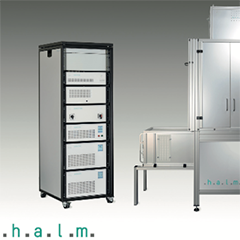With bifacial PV devices a large gain in solar power generation in the range of 10%-20% can be achieved in the field. Despite this, selling bifacial devices at higher prices is still a difficult task. With peak-performance of solar cells and modules at standard testing conditions being the price meter, true bifacial testing is a key step to achieve bifacial pricing in the future of PV. We present deeper insight into bifacial testing and analyse the economic impact of different approaches.
Large-scale production of bifacial solar cells and modules has become possible mainly by three developments over the last few years – dielectric passivation layers on both sides of the solar cells, thinner glass for solar modules and alternatively transparent backsheets. Offering a major increase in electricity generation at a comparably low increase in costs for device manufacturing, bifaciality has become one of the largest industry trends in photovoltaics in the recent years.
Bifacial devices achieve a gain in power generation of 10% – 20% compared to monofacial references [1-5], depending on system design, albedo of the systems’ location as well as the bifaciality coefficient of the modules. This gain, which corresponds to 2% – 4% higher solar cell efficiency, is larger than the gain achieved by the PERC process implementation.
Though the bifacial gain is not put into question, manufacturers still struggle with the incorporation of the rear-side power in pricing of PV devices. One reason is clearly that the effective benefit of bifaciality depends on the details of the solar module mounting and the configuration of the solar system and cannot be precisely predicted when solar cells or modules are produced. Whereas this pricing barrier is hard to overcome, a second issue can easily be solved.
The power output of bifacial PV devices is often measured with front-side illumination only, thus no value for their individual bifacial performance exists. This is contradictory to the long-lasting tradition of selling PV products by Wpeak – a price meter relying on direct measurement of the output power of each individual cell or module.
This issue is solved by using two independent light sources in measurement systems used for bifacial PV production and defining standard conditions for measuring the bifacial power output. In the following we analyze economic impacts of bifacial vs. single-side illuminated rating of bifacial PV devices, addressing system cost, operating cost, direct economic benefit and indirect benefit through process optimization and customer trust.
From a technical point of view, the main difference between measurement technologies for bifacial PV devices is the illumination of the device either just from one side or from both sides (see Figure 1). The single-sided approaches thereby rely on a constant bifaciality in production, the main assumption of these technologies.



























